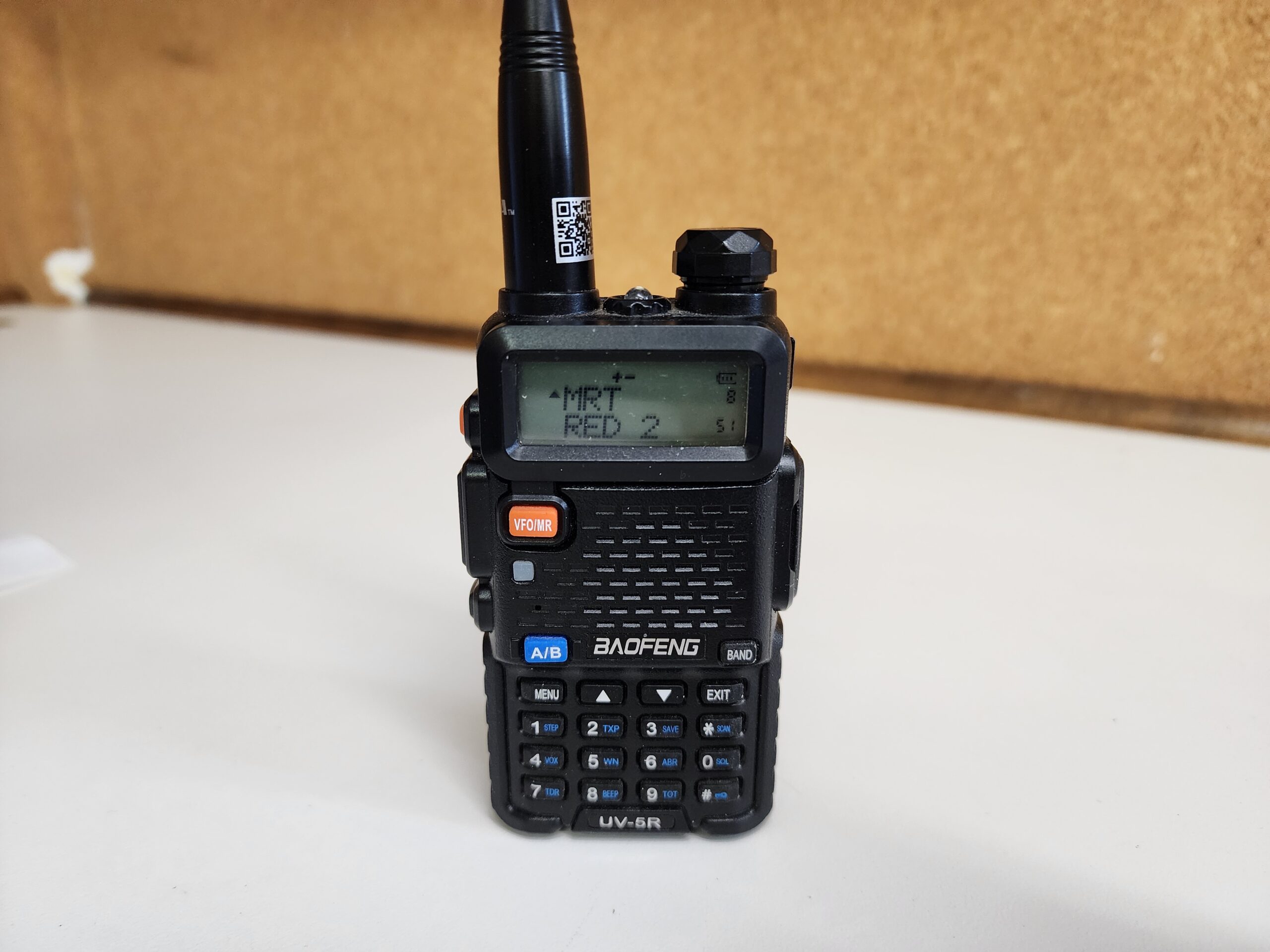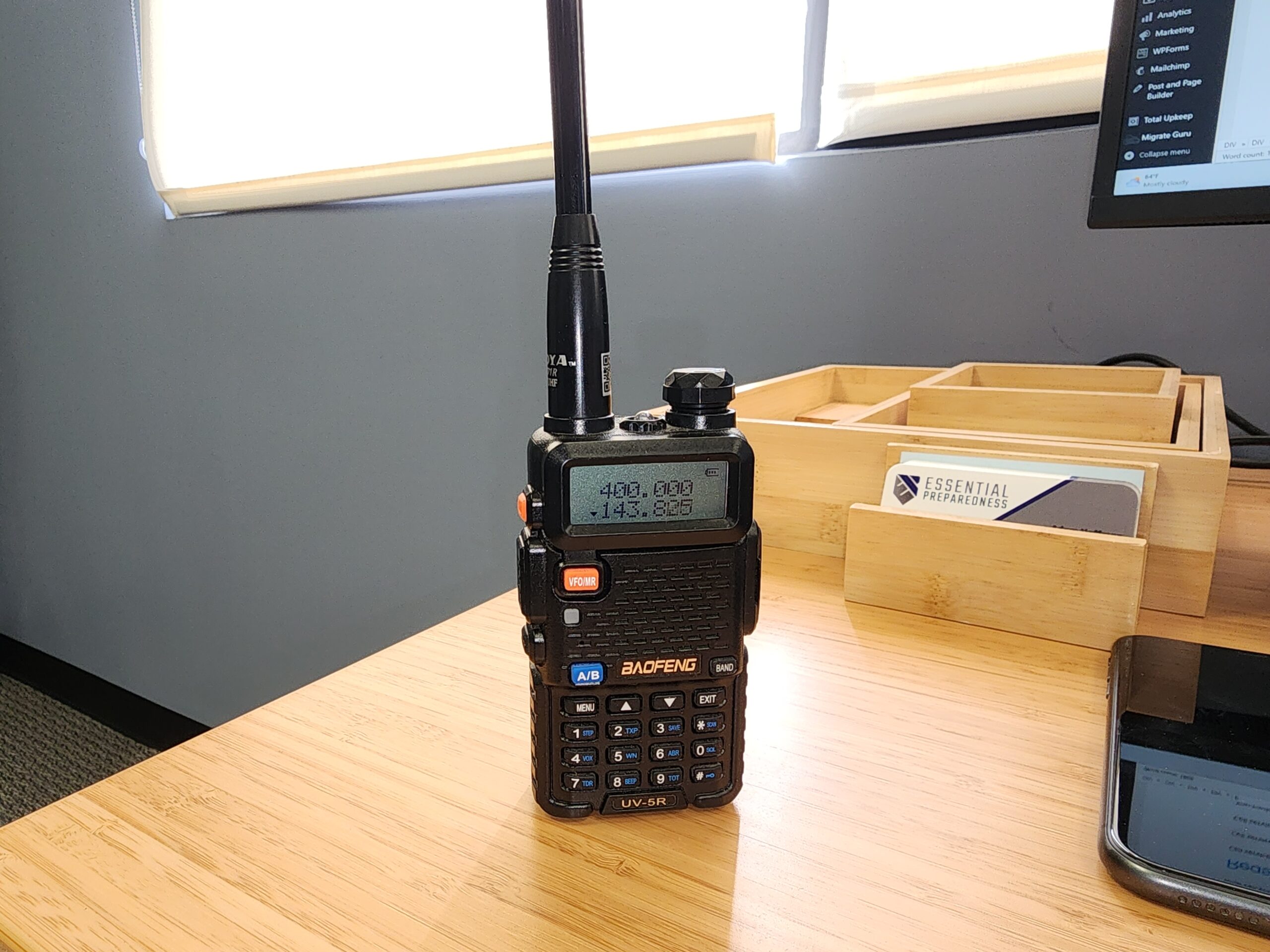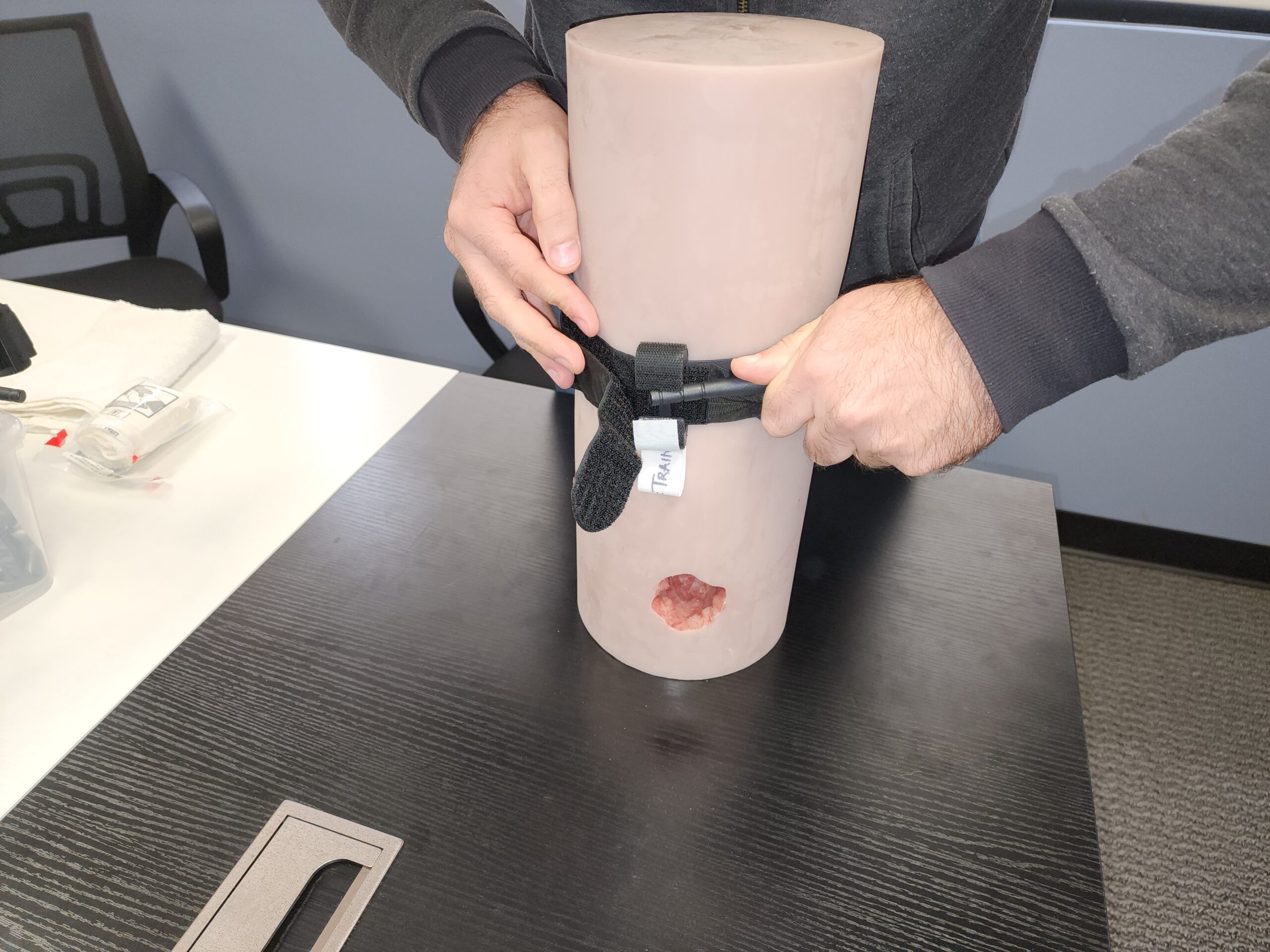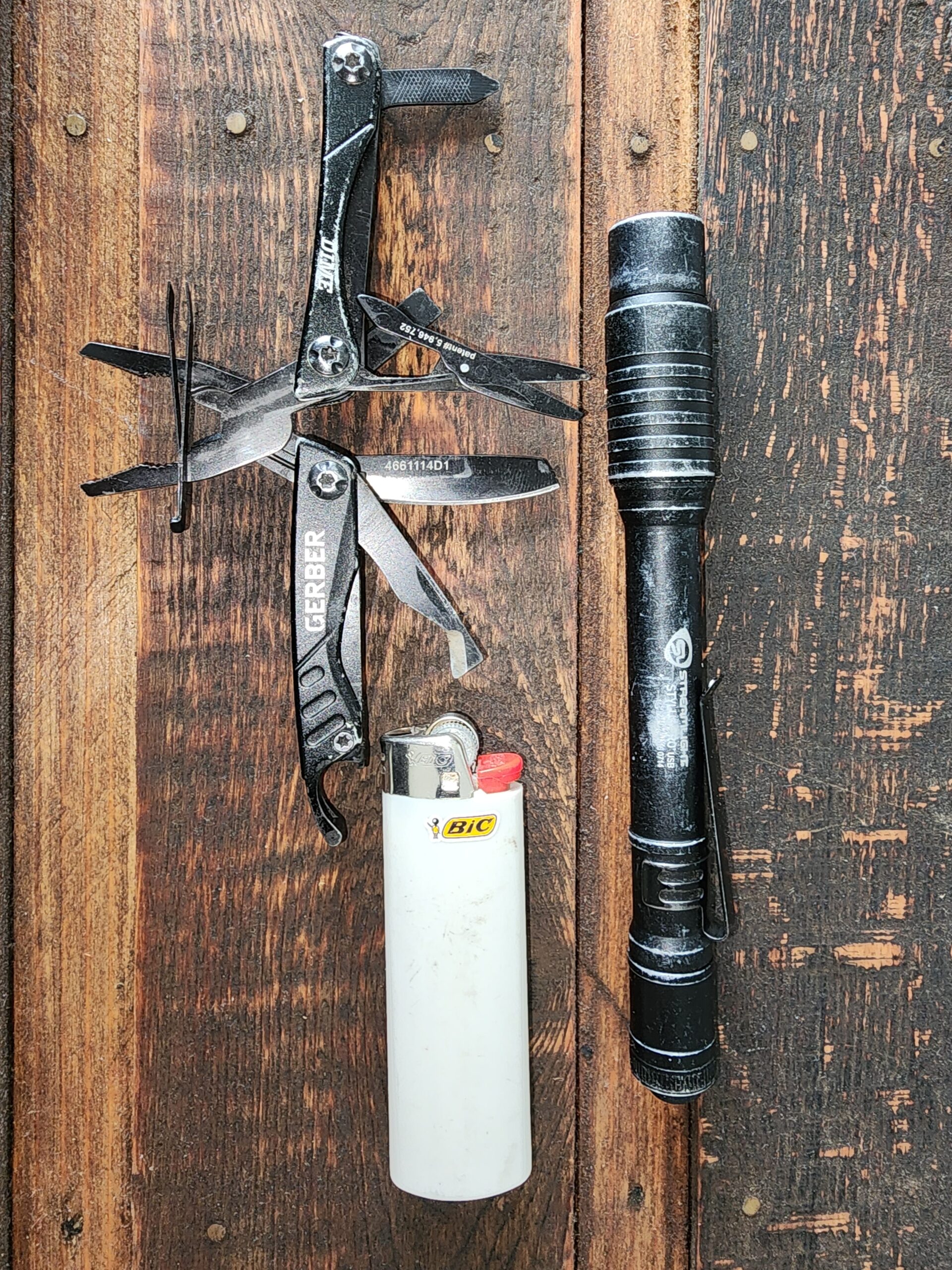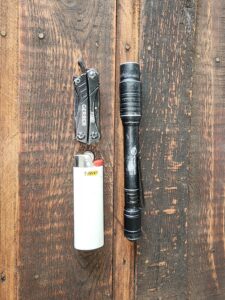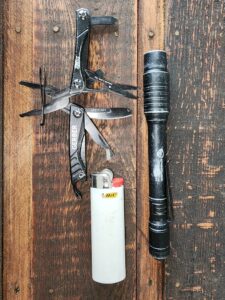Tourniquets
Over the last couple of decades, the likelihood of someone being involved in an incident that would require them to have life saving knowledge and equipment has increased. We have seen many riots and shootings and even had a large scale terrorist attack. Aside from the everyday dangers that one may encounter, these incidents are becoming more frequent.
For me, a major cause of concern is the sheer number of lives that could be saved if people nearby were trained and willing to administer life saving treatment to the victims of these attacks. Sadly, few people know what to do if someone gets a life threatening wound, like a gunshot. Because the damage from them comes from widespread hydrostatic shock, as well as the hole they make, many GSWs (gunshot wounds) can easily cause arterial bleeding. When they are on an extremity, such as an arm or leg, a tourniquet can be applied to cause “blood occlusion” which basically means the flow of the arteries has been clamped off.
Tourniquets have been in use for somewhere around 2600 years and have seen very little change in their basic function. However, they are now being mass produced, and a great deal of research and development has gone into the various designs. As a result, some great tourniquets have hit the market, and some that aren’t much better than a rope and a stick. Lucky for us laymen, there is a group that tests and approves medical care and equipment as it relates to the type of wound caused by mass casualty events.
The CoTCCC (Committee on Tactical Combat Casualty Care) examines the data on tourniquets, and either approves them, or doesn’t based on certain criteria. Until recently, there were 2 tourniquets on their list. At this time there are 8, but some of them are older versions that have since been replaced. A quick search will reveal a current list. The list is the deciding factor on what the military, police, and first responders carry in the field.
Wound Care Basics
Make no mistake, a hole in your body will do the same damage at the shopping mall or on the construction site as it does on a battlefield across the world. If you want to be prepared, you need to be able to recognize the types of bleeding, and know how to stop them.
First, there is minor bleeding. This is usually from a scrape or small nick, not even worthy of being called a cut. Slap a bandage on it and you’re going to be fine.
Second is heavy bleeding. This is a real cut. It could be bad enough to need stitches or surgery, but you only need to recognize that there is a lot of blood coming out. The blood will be oozing or dripping, and you will need to apply pressure or even pack the wound with gauze to stop it.
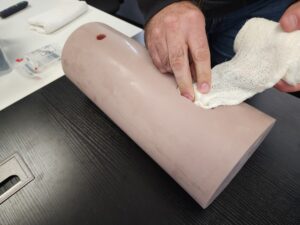
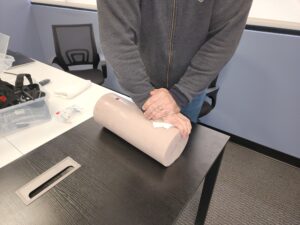
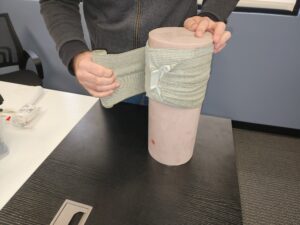
The third, arterial bleeding, is the most severe. Arterial bleeding is when blood is squirting, or pouring out. This type of wound will likely require more than just pressure and packing. If it is on a limb, a tourniquet will need to be applied. In the pictures below, you can see a training tourniquet being applied.
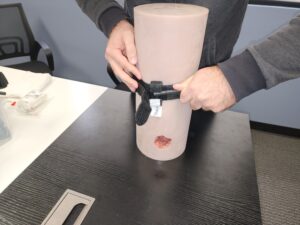
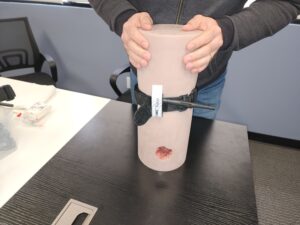
Someone with a wound like that does not have long to live. In fact, in less than two minutes, they could be gone. That does not leave time for an ambulance to come, so either they are going to have to get their own bleeding stopped, or someone else is. Being ready with a tourniquet, in this case, is the difference between life, or death.
Tourniquets We Trust

CAT Gen 7
The most common type of tourniquet you will find on the market is the CAT Gen 7. This tourniquet, which has been approved by the CoTCCC for a long time, is very simplistic in its design. It has a red tab that makes it easy to know where to pull while you are under stress. Believe me, when you are in a stressful situation, you fumble around, and lose fine motor skills. Having visual cues helps mitigate the confusion and fumbling when seconds become precious.
This is the reason the Army uses the CAT Gen 7 tourniquet. It is not only easy to use, but it deploys very quickly. In combat, soldiers need something quick and effective. The CAT fits the bill in every way. That is why they are so popular in the civilian market as well. The sooner you get blood loss under control, the better chance a victim has of surviving.

SAM XT
Another tourniquet that is approved by the COTCCC is the SAM XT. While it does retain many of the same qualities of the CAT, the SAM stands out with its locking mechanism. With the CAT, you have to back wrap it onto itself so it can engage the hook and loop strips before you tighten it. With the SAM, you pull it tight, and it clicks into place. No additional steps are needed before you start tightening.
Stay Away From Cheap Knock Offs and Gimmicks
Fake CATs
It has been said that imitation is the greatest form of flattery. While that may be true, in the case of tourniquets it could be deadly. The phrase, “you get what you pay for” is the last thing you want going through you mind when you are applying a tourniquet, and the windlass snaps in half. The truth is, it is going to be hard enough to apply a tourniquet, so you will want to rest assured that when you do, it will do its job.
There are a number of tourniquets available online that look identical to the CAT. They are not the same thing. CAT tourniquets are made in America, and they are made to meet the needs of military, law enforcement, and first responders. The cheap ones are made to get you to buy them, and they are usually made in China. The materials used are not guaranteed to hold up to the forces applied when a tourniquet is tightened.
If you read the reviews given for them, you will find that the windlass, the stick used to tighten the tourniquet, will often snap. This means that all the time it took to get the tourniquet in place is now wasted, and it may need to be removed before another one can be applied. Take into consideration the time it takes for a person to bleed to death. You don’t want to waste any time.
The truth is, these tourniquets are merely a greedy attempt for someone to tap into a market without having to put the effort into R&D, good materials, or quality manufacturing. They don’t care that their product might fail, and a life will be lost. They got their $10. Don’t bet your life on a knock off. The real thing is only $20 more.
Misleading Labels
Another thing you will see is the term “TCCC” approved on tourniquet’s label. You might think that means the CoTCCC has given their blessing for that model, but you should check the list before you make your purchase. There are tourniquets on the market that use this misleading tag, and they hope to gain your confidence with it. They will also use terms like, “combat proven”. I’m not sure what they mean by that, because the US military uses models that are on the CoTCCC list.
You might also see a doctor’s approval. This does not mean that they are effective. It simply means that a doctor somewhere, for one reason or another, signed off on them. I’m not saying that money was exchanged in order to gain that approval, but it wouldn’t be hard to believe. And even if it is approved by some unknown doctor, it does not prove its effectiveness. The only way to truly have confidence is if the tourniquet is CoTCCC approved.
Unproven Designs
There are a couple of types of tourniquets that fit into that description, and while there is a chance they will work, it is not worth the risk to use them. One model uses bungee cord material and requires the use of a knot that the user must tie to lock the tourniquet in place. When you lose fine motor skills, the last thing you want to do is try to tie a knot. Add slippery, blood covered hands to that and you have a recipe for failure.
Rubber hoses and tie-off bands
Another thing you will see is a flat rubber tie off band being passed as a tourniquet. While you can stop small veins from bleeding, you will not stop an artery. These bands are used to tie off an arm before an injection and are not useful in an emergency.
Likewise, rubber hose or surgical tubing can be called a tourniquet in some first aid kits. While there has been some success using them in a pinch, they have to be applied just right and held in place by a pair of hemostatic pliers. Even when applied correctly, they can shift position and need to be re-applied. Once again, please buy the real thing and get it right the first time.
Pro Tips:
GET TRAINED
Once you buy a tourniquet, you need to get trained in how to use it. There is a wrong way to use them, and you will want to make sure you get quality training. We offer classes on this, and many more life saving techniques. Contact us to learn more.
PRACTICE
Once you learn how to use one, you need to practice. Run Drills to see how fast you can get a tourniquet on your arm or your leg. Try it in different positions, and in different levels of light. If you train often, it will be second nature to you if you ever need to use one for real.
CARRY ONE
Carry one with you. If you go hiking, or are playing a sport, put one somewhere that is easily accessible in case you need it. Put one in your home first aide kit or carry an IFAK. We offer a couple of IFAK options that both include a CAT Gen 7 tourniquet, as well as other items to help stop heavy and arterial bleeding. Everything we put in them is top quality. I carry one in my backpack that goes with me everywhere.
